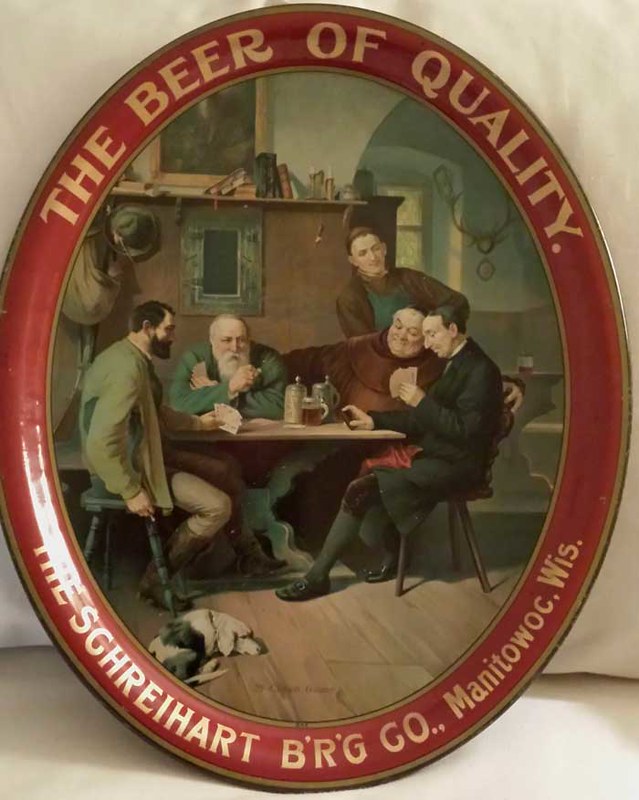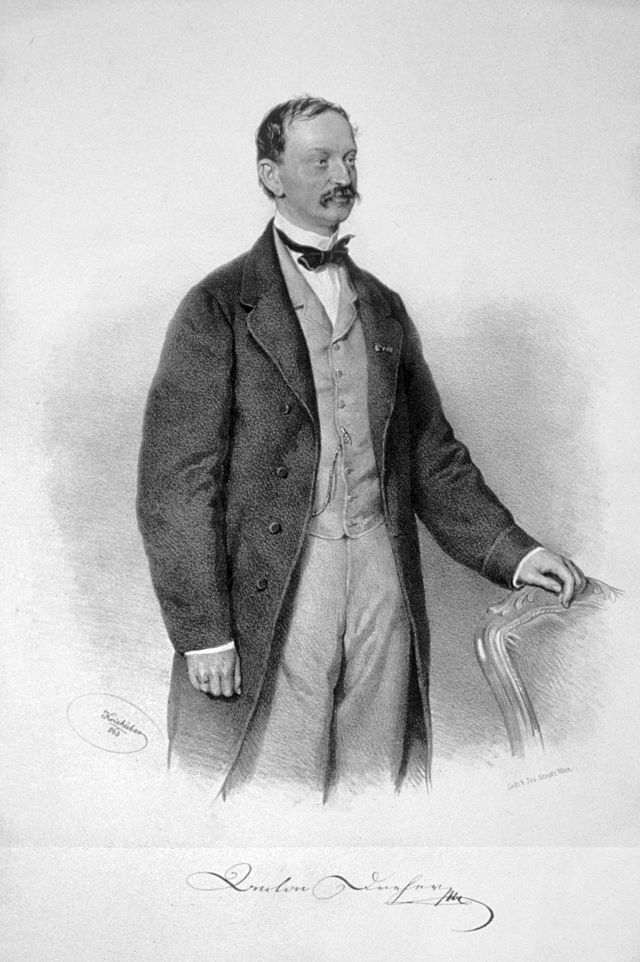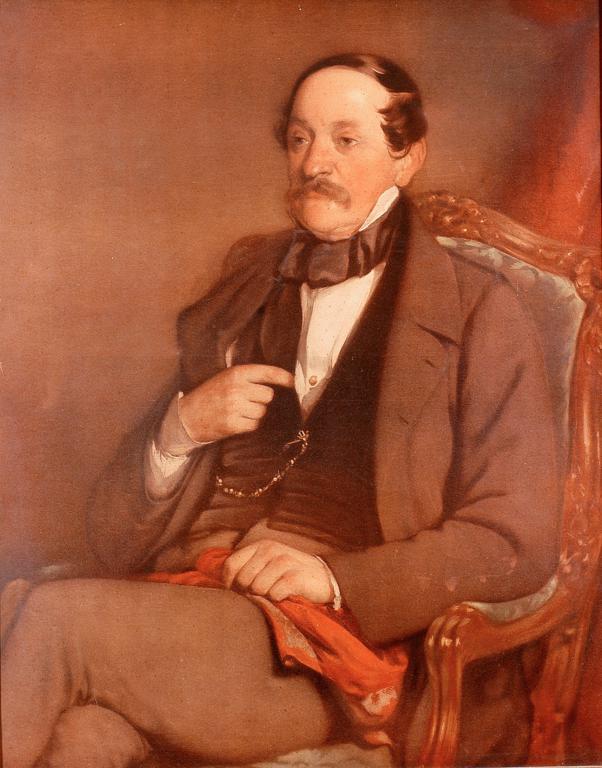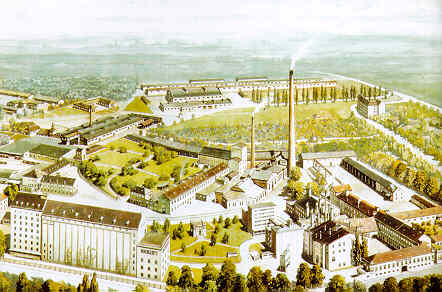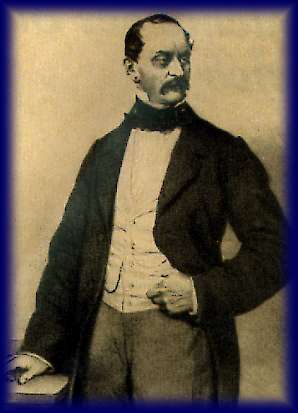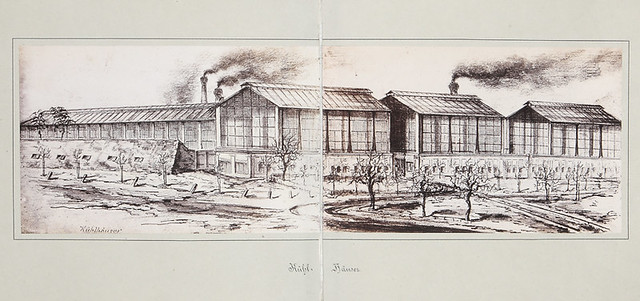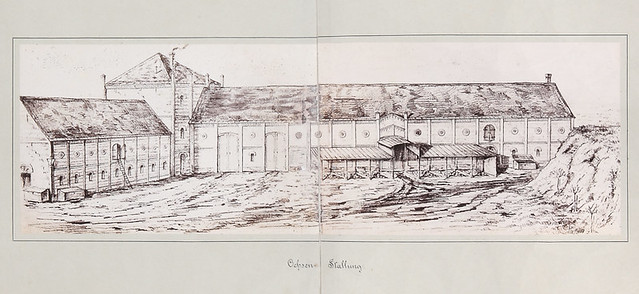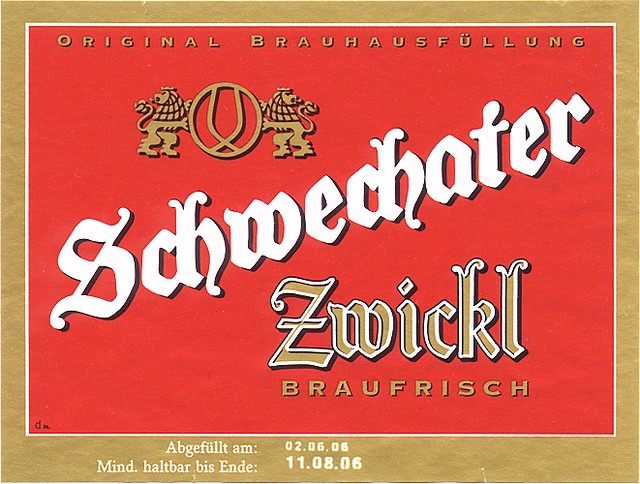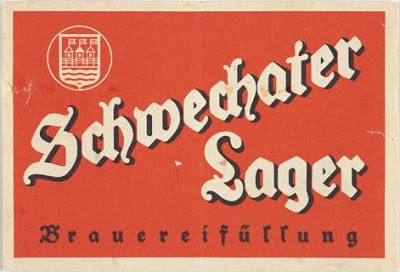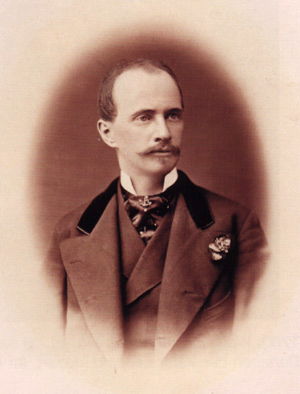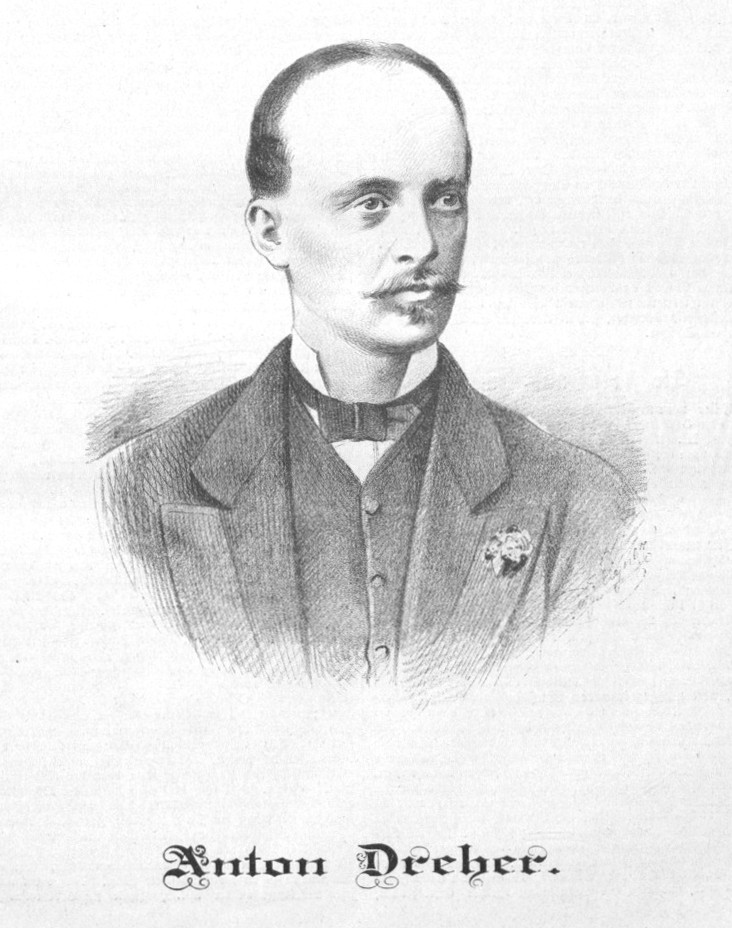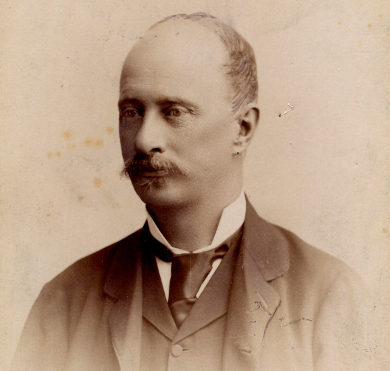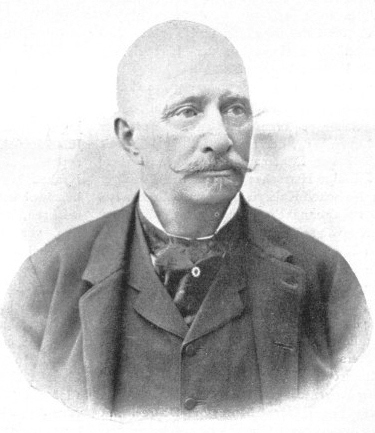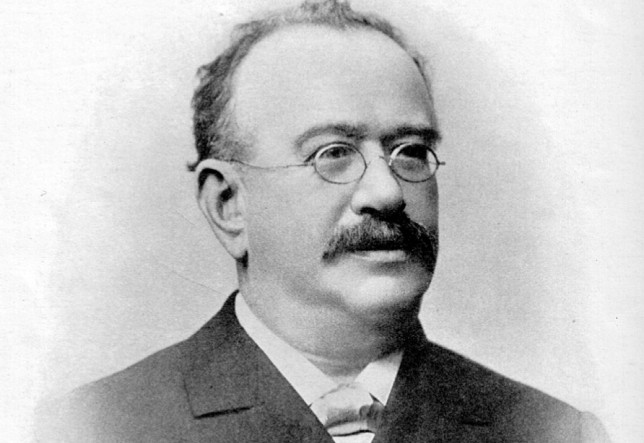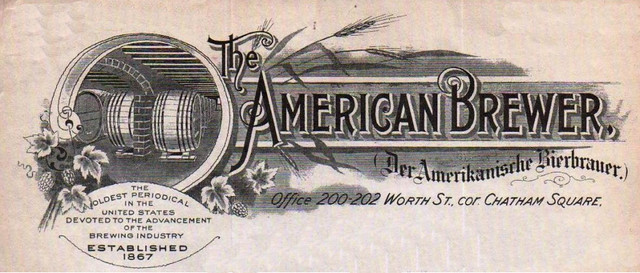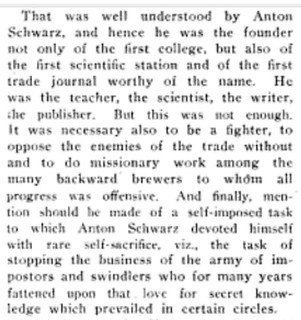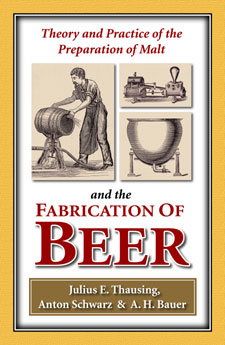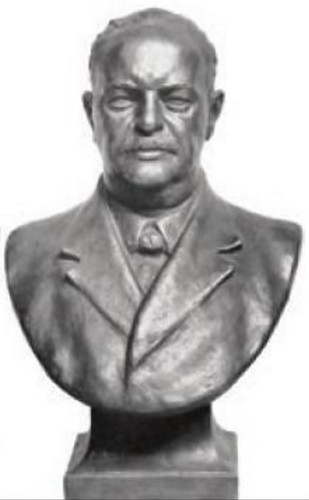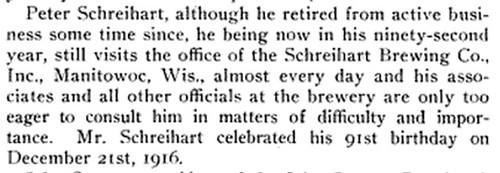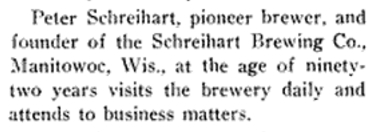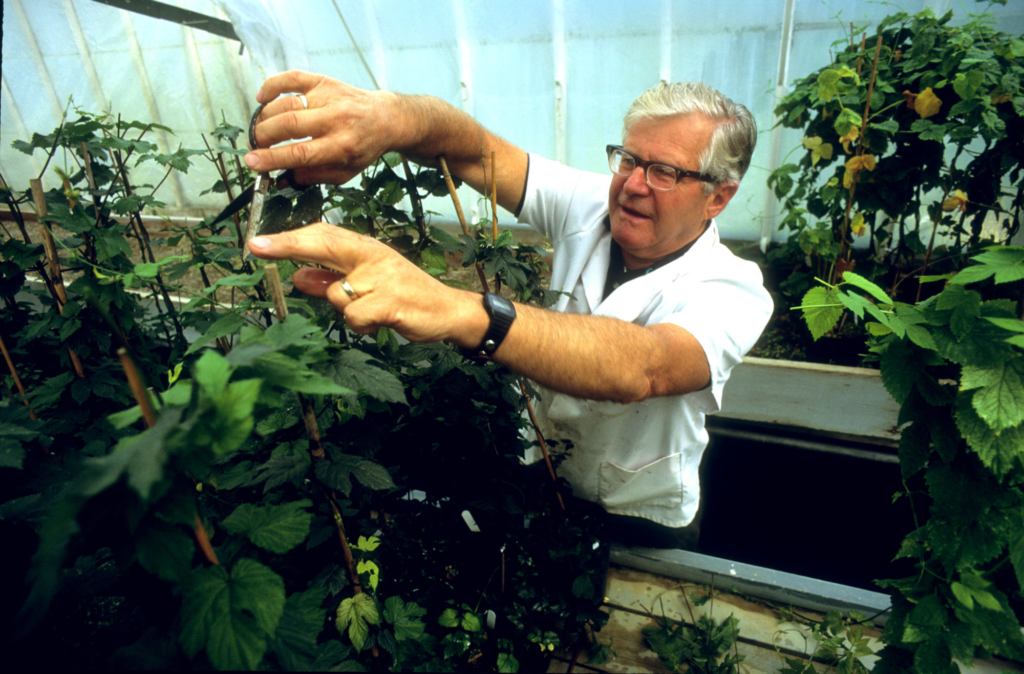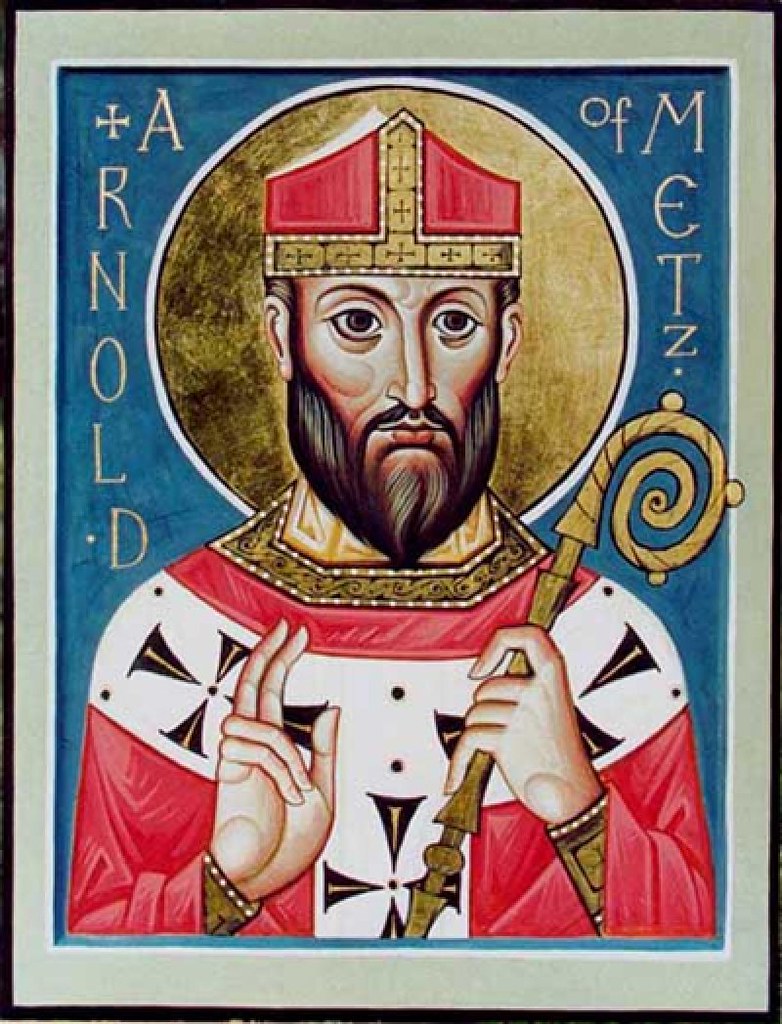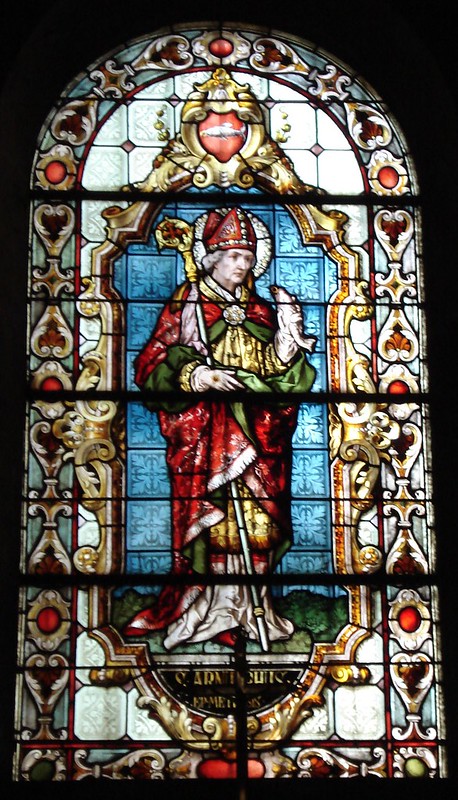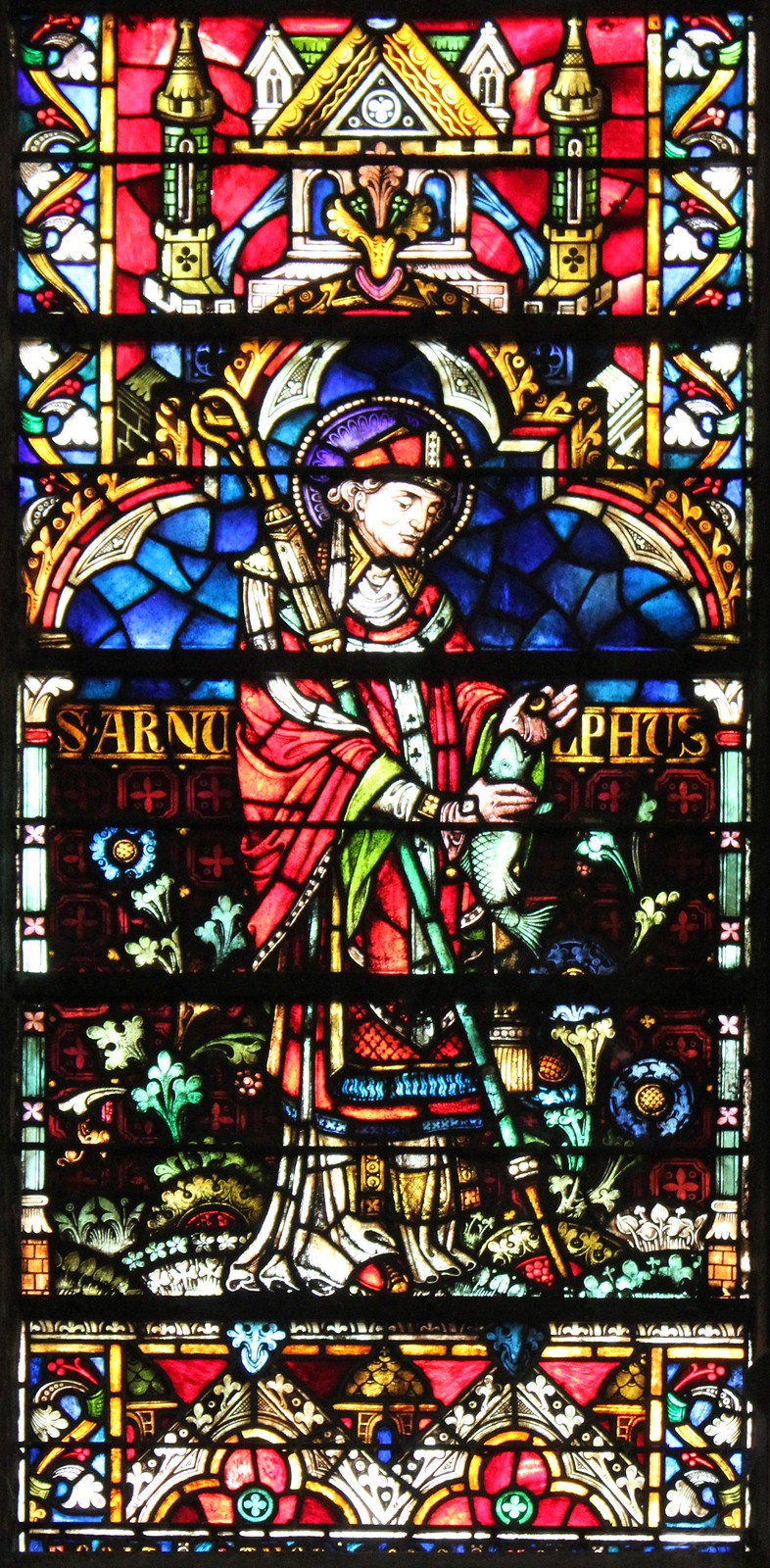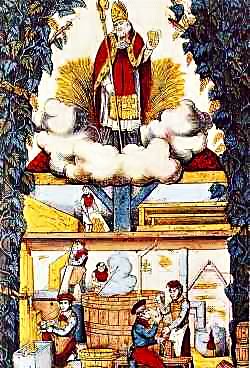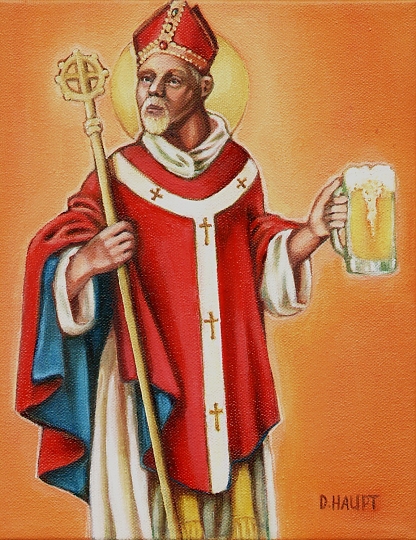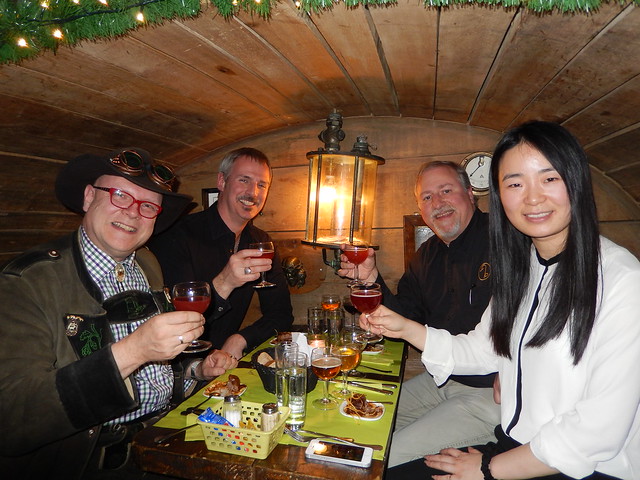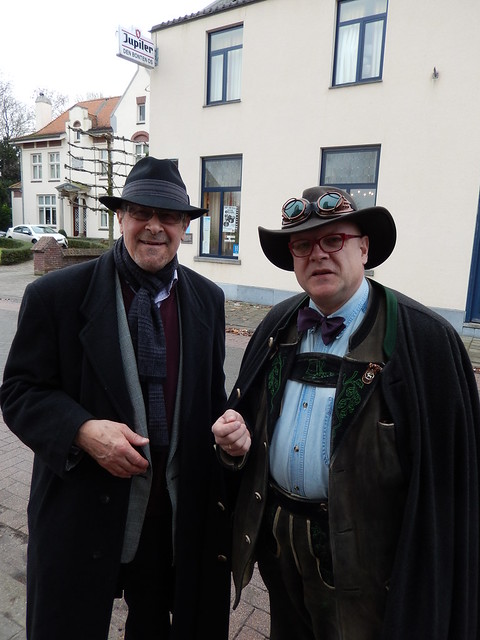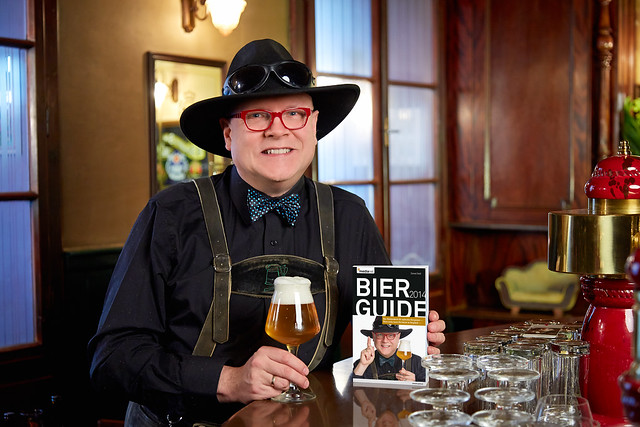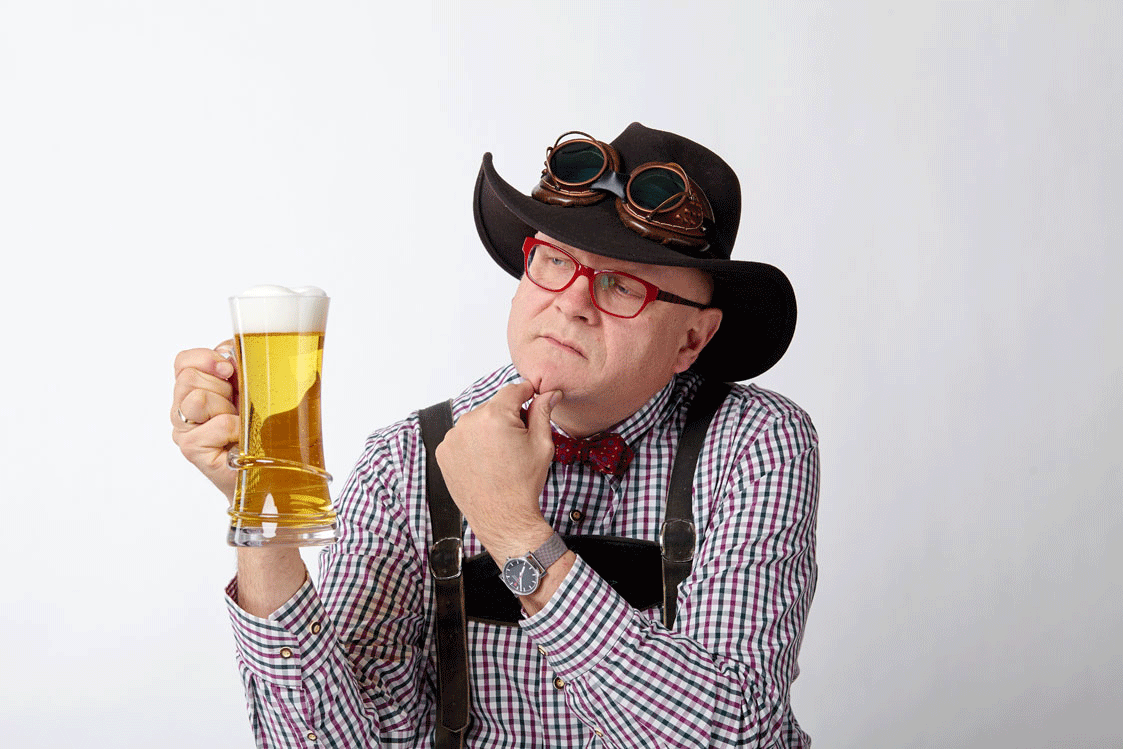
Today is the birthday of John Schreihart (June 28, 1842-January 6, 1925). He was born in Austria, but moved to Wisconsin when he was 25, in 1867. Along with a partner, Frederick Pautz, bought the William Fricke Brewery, which had been founded in 1862. In 1879, John become soler proprieter, re-naming it the John Schreihart Brewery, and later the Schreihart Brewing Co. John Schreihart died during prohibition, and the brewery re-opened as the Bleser Brewing Co. in 1937, closing for good in 1942.
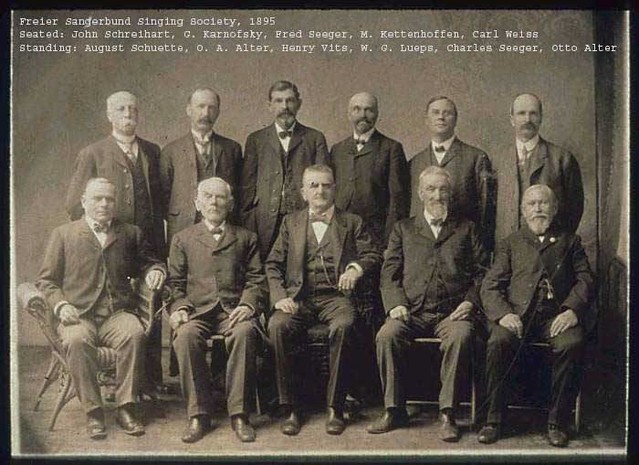 Schreihart apparently liked to sing. That’s him in the front row, seated on the left.
Schreihart apparently liked to sing. That’s him in the front row, seated on the left.
Here’s his obituary from Find-a-Grave:
J. SCHREIHART, PIONEER DIES, TODAY, AGED 82
Pioneer Brewer Who Came Here in ’67, Is Called Death early today claimed John Schreihart, pioneer brewer of the city and for many years identified with business life of the community, Mr. Schreihart passing away at his home at 1017 South Eleventh street at the age of 82 years. Up to a few weeks ago Mr. Schreihart, despite his age, had been in good health and was active, but five weeks ago suffered a decline which caused him to fall rapidly and brought death today. For a week he was a patient at the hospital but later, at his request, returned to his home where the end came.Funeral services for Mr. Schreihart will be held Friday morning at 9 o’clock from St. Boniface church, the Rev. Kersten officiating. Burial will be at Calvary cemetery.
Came to City in ’67
Mr. Schreihart was born at Duerngren, Austria, June 28, 1842 and spent his early life there. In 1866 he was married to Frances Wilfer there and a year later came to America, retiring after a short stay to bring Mrs. Schreihart to this country and the couple came directly to Manitowoc where they have since resided. On February 2, 1916, they celebrated their golden wedding at their home here.In 1871 Mr. Schreihart, who had been seeking a business formed a partnership with Mr. Pautz and the two purchased what was known as the old Fricke brewery plant with which Mr. Schreihart was identified until 1885 when, on occasion of a trip to Europe, he leased, but he again resumed management of the property upon his return and in 1890 a new association was formed with Mr. Schreihart, Frank Willinger and Gustave Mueller as partners, Mr. Willinger retiring from the company in 1891 after which the business was operated under name of the Schreihart & Mueller Brewing Company until 1904 when the business was incorporated under the name of the Schreihart Brewing Company, Mr. Schreihart having continuously been director of its affairs. In 1911 Charles Kulnick purchased the Mueller interest in the concern and H.J. Schreihart became president of the company, its founder retaining interest but not giving attention to active management of the business.
In later years the plant became a part of a merger of three brewing concerns of the city, the Schreihart, Rahr Sons and Kunz & Bleser company and the merger incorporated under name of the Manitowoc Products Company by which title it is still known. With the advent of the prohibition law, the brewing plant of the Schreihart Company on Washington street was transformed into a plant for manufacture of ice cream and soft beverages and still continues in that operation. Mr. Schreihart retained his interest in the company.
Built Schreihart Block
During his long career as a business man in the city Mr. Schreihart was widely known and enjoyed the respect of the community had been active in support of building of the city and contributed freely to the enterprises which aimed to this end. He build the Schreihart block at Tenth and Washington, one of substantial business blocks of the city.After his retirement from active life, as his advanced years necessitated, Mr. Schreihart continued to take an interest in civic affairs and up until a short time of his last illness, was about as usual.
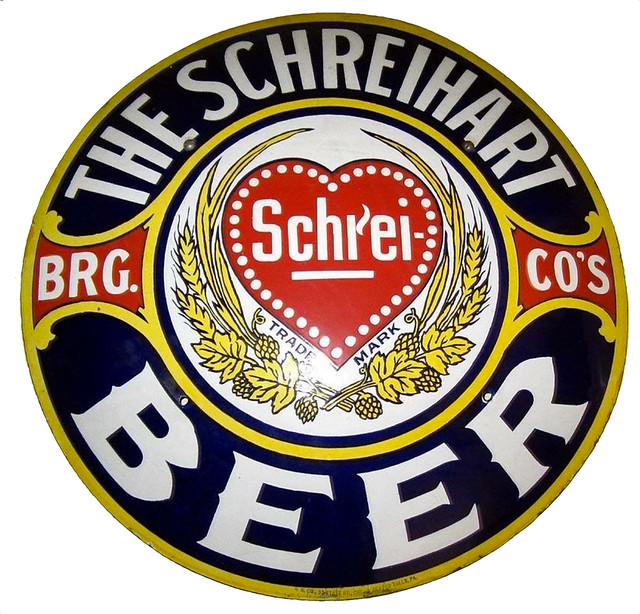
And this is biography is from the “History of Manitowoc County Wisconsin,” by Dr. L. Falge, 1911-1912, v.2, p.74:
John Schreihart, who is one of the well known brewers of Manitowoc county, Wisconsin, is a native of Austria, and came to this county in 1869, working for others for two years, and then forming a partnership with a Mr. Pautz. He eventually purchased the Fricke Brewery, which he rented in 1885 when he went on a trip to Europe, but in 1890 assumed management of it again with Frank Willinger and Gus Miller. In 1891 Mr. Willinger sold his interests to Mr. Schreihart, and it was operated by the other partners until 1904, when the firm was incorporated under the style of Schreihart Brewing Company. On January 1, 1911, Charles Kulnick bought the Miller interests, and at this time H. J. Schreihart, who up to that time had been brewmaster of the concern, was made president; Otto Senglaub was elected secretary; and Charles Kulnick, treasurer and manager. The plant has a capacity of thirty thousand barrels per year and produces the well known “Weiner” and “Old German Style” beers, employing fifteen men. John Schreihart married Frances Wilfer, a native of Germany, and they had five children, namely: Mrs. Charles Kulnick; H. J.; Ed, who is engineer at the brewery; Helene; and Adolph, who is studying for the priesthood. Ed Schreihart married Miss Schroeder of Milwaukee. H. J. Schreihart attended the Hanthe Brewing School of Milwaukee, now known as the Industrial Chemical Institute, after leaving which he entered his father’s brewery as brewmaster, a position which he held until his election as president in 1911. He has served as supervisor of the third ward for two years, and is prominent in business and fraternal circles. He was married to Miss Hattie Hartwig, of Manitowoc, Wisconsin.
Pautz’s Brewery was built in 1849, by Mr. Hottleman, he being the first to brew beer in the county. G. Kuntz purchased the brewery of him in 1865. Messrs. Fred. Pautz and John Schreihart became the owners in 1875. In November, 1878, the former purchased the interest of the latter, and is now conducting the business alone. The capacity of the brewery is about 1,600 barrels of beer per annum.
Schreiharts’s Brewery. In 1879, John Schreihart established himself in business, and is now conducting a brewery on Washington street. He has been brought up in the business and understands it.
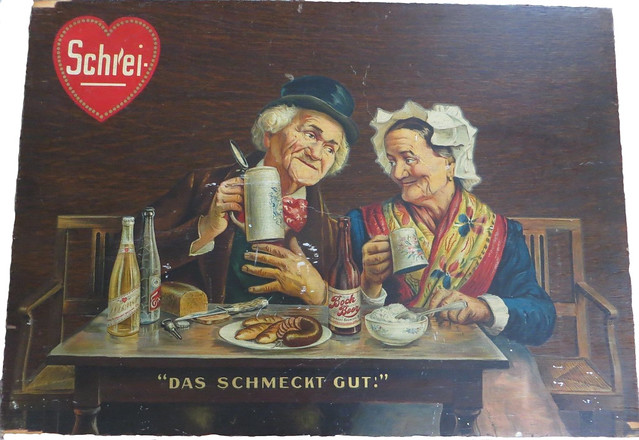
From what I can piece together about the brewery itself, it appears to have been built in 1849, and went through several name changes from the William Fricke Brewery, the Christian Fricke Brewery, and then the Carl Fricke Brewery. It seems to have been called by the latter name when Frederick Pautz and John Schreihart bought it in 1875, but it didn’t become the John Schreihart Brewery until he bought out Pautz in 1879. A few years later, in 1884 until the following year, it was known as the John Schreihart & George Kunz Brewery, presumably because Schreihart took on George Kunz as a partner. Then there’s a gap in the record, but by 1891 it was known as the Schreihart Brewing Co. until it was closed by prohibition in 1920. The building apparently lay dormant after repeal in 1933, but from 1937-1942 housed the Bleser Brewing Co., which I assume was because they leased or bought the building where the Schreihart had brewed.
